Women Aging in a Patriarchy
By the time this publishes, my dearest friend in this world will have already turned 35 (happy birthday, Samantha!). Samantha is wickedly smart, funny, resilient-as-hell, imaginative in the most provocative of ways, and gorgeous to boot. Yet she was minimizing this upcoming celebration within her personal time-line. “It’s just another day.” Personally, I’m of the opinion that this goddess should be celebrated daily for who she is, but she obviously felt otherwise. With these fears reverberating off her self-conscious, my audacious friend earned herself a place within an unnamed, unclaimed sorority; keeping company with some of the most powerful and influential women that have walked upon our beautiful Mother.
Anti-aging isn’t a newly imposed fear invented by capitalism, though capitalism has surely perfected the craft with its endless marketing campaigns and visual onslaughts. Historical accounts over the centuries make evident anti-aging has had a suffocating grasp upon the evolution of social norms for hundreds of years, if not more. The intentional lack of Elizabeth Tudor’s aging face within the iconography acts as case and point here. Though she reigned until aged seventy and was plagued with an incredibly scarred face, Elizabeth learned from her farther the power of being a propaganda-pro. Projecting imagery of a young, attractive, physically imposing monarch the entirety of her reign, regardless of the reality. She matured within the imagery, but she never aged. An important distinction.
“Anti-aging is the ultimate capitalist goal, because it can never be met, right? It’s physically impossible to anti-age. And to try to anti-age is to be a consumer for life.” -
Those that are familiar with the themes found within this space will already know where I am going to place blame for imposing this pernicious view of women’s aging upon my gift-of-a-friend and Gloriana alike. But for our new community members, let me explicitly clarify: The Patriarchy. White supremacist capitalistic patriarchy1 is to blame. Only in a patriarchal society would women’s aging, or aging in general (an inevitable human condition), be viewed as a weakness, a vulnerability to be dealt with and exploited as opposed to a wealth of context to be tapped into and cared for. Our seniors lived experiences and progression through the final stages of life could better inform our understanding of the human condition, yet more often than not we place them into the margins or remove them from view all together.2
Twenty-first century girls are burdened with growing into maturity in a society which incessantly upholds the idea that there is a particular period within their lives when they possesses value. Outside of those elusive years, they are no longer in their ‘prime’, thus decreasing in value the further into womanhood they step—according to a patriarchy. Similarly, the Middle Ages were rife with literature and sermons reminding women of their reproductive and womanly duties. Though the manner in which we have used language has changed, you don’t have to look far for the modern parlance; the patriarchy is currently pushing forced-birth rhetoric into our everyday vernacular. The modern equivalent of medieval misogyny.
So, do women truly have an expiration date on their greatness, or is that a myth perpetuated by the patriarchy to counter the confidence of middle age and agency?
Matilda walked so Eleanor could run
In 1137 at the age of thirteen, Eleanor of Aquitaine very suddenly lost her father, William X duke of Aquitaine and count of Poitou. William had been a force of a man that valued both his chivalric honor alongside his poetic wit and it’s clear through later actions that he instilled these same values within his daughter. His sudden death while on pilgrimage left Eleanor to inherit the duchy of Aquitaine, which at the time was perhaps one of the largest inheritances in all of Europe. For those unfamiliar with the medieval landscape of Western Europe, Aquitaine’s sprawling countryside equated to roughly a quarter of medieval France.3 Meaning Eleanor was suddenly very wealthy and powerful in her own right.
Men fearing what wealth and power would do in the hands of a young woman (according to the time, 12 dictated she was mature enough to endure marriage), her inheritance quickly fell under the purview of Paris when she was married to the king’s son, Louis VII. Seven days after her marriage, Eleanor was queen of France.
Eleanor and Louis marriage lasted another 15 years (surprisingly) and produced two daughters, but the extreme differences between the bride and groom ultimately led Louis, on Eleanor’s earlier suggestion, to seek a papal dispensation to have their marriage annulled on the grounds of consanguinity (closeness in blood relations). Modern historians are quick to site Eleanor’s love for an ostentatious wardrobe, or the rumors of the affair with her Uncle, or perhaps even Eleanor's headstrong and precocious ways as potential pitfalls in their marriage. But the truth was Eleanor and Louis were taught two very distinctly different ideals of what it meant to be nobility, and they clashed more often than not over it. And because Eleanor is of the second sex, burden has been historically placed upon her and accepted as fact.
Though it is likely Eleanor was relieved to be free of the match, as contemporary gossip claims she later referred to Louis as more of a ‘monk than a king’,4 the annulment placed her in a precarious position. She was an extremely wealthy woman without a patriarchal protector in a time that would honor seizure and rape as a form of marital consummation. Understanding well how to navigate contemporary social constructs, Eleanor knew she needed to remarry. Blazing across the French landscape by night and day (and perhaps even under the guise of men’s clothing), she and her retinue did all they could to ensure she safely arrived in Poitiers. This is where she urgently wrote to a young duke of Normandy, Henry FitzEmpress, eldest son of the powerful Matilda, insisting he come marry her with all haste. Luckily, for England’s sake, he was smart enough to listen.
Henry had been preparing to invade Stephen’s England, instead he and his infamous energy focused its attention upon Eleanor. “Impatient at all delay”, Henry rushed to Poitiers and on May 18th, 1152, Eleanor and Henry wed at the cathedral of Notre-Dame-la-Grande. Though the wedding was small, the impact it would have upon Europe was not. The joining of the two fused together a massive expanse of the medieval French landscape, combining Eleanor’s duchy of Aquitaine with Henry’s Normandy, Anjou, Maine, and Touraine. Two years later, Stephen was dead and Eleanor was crowned queen of England alongside Henry on December 19, 1154 in Westminster Abbey.
Eleanor and Henry had eight children in thirteen years, three of which would go on to be kings of England (in title, at least). While they waited for their time in the limelight, their four boys that survived childhood would require roles to occupy them and this would prove to be the most challenging aspect of Henry II’s reign. Henry was a man that operated out of low-trust and tightly clung to his power. Like most patriarchs, he fully understood how fragile it really was. Glass dressed up as stone. The territory Henry reigned over was expansive, from the medieval borders of Scotland to the southern borders of Aquitaine, no amount of energy would render him able to oversee all of it on his own.
In 1168, Henry escorted Eleanor home to a rebellious Poitiers where she was to take up the mantle of government for the duchy of Aquitaine, her right by birth, to settle the lords that were unruly under their English king. Once there, Eleanor didn’t waste any time establishing a system of government and court that suited her personal brand of power. Part of her governmental overhaul was to “cut herself away from feudal kings and to establish a Poitevin domain subject to a distinctly Poitevin regime.”5 She also took elaborate measures to establish her own heir of Aquitaine and accompanied her second son Richard (the future Coeur de Lion) on a pompous progress of sorts, asserting his right to inherit and rule Aquitaine (after her.)
Though Eleanor’s power was absolute, it was more palatable than that of her mother-by-law Matilda’s before her, as Eleanor operated within her patriarchal roles to access that power: either representing her husband, staunchly advocating on behalf of her sons, or delegating in their name. Despite the fact she created a court and government to her suiting, and as 20th century historian Amy Kelly observed, “she was resolved to escape from secondary roles”, Eleanor fully understood the subtle maneuvering required of women to access power within a patriarchy. And as she aged, she further grew into that power. There is a reason the queen holds all of the power in the game of chess.
Eventually, their sons rebelled against Henry, disdaining the way in which he controlled and undermined their positions more often than not. They were able to persuade Eleanor to join their cause, though persuasion may be too strong of a word here, as Eleanor was likely “equally as frustrated as her sons with Henry’s inability to share power.”6 Contemporary chroniclers focused heavily on Eleanor’s choice to back her sons instead of her husband. Much like today’s fundamentalists preaching man/husband as the head of woman/wife, medieval misogynists found it natural for a son to rebel against a father, but wholly unnatural for a wife to rebel against a husband.
This family strife, now known as The War Without Love, ultimately lead to the death of their eldest son and the imprisonment of Eleanor by her husband, which would last for a grueling fifteen years.
Henry II, the victor of the family squabble died on July 6, 1189. The first act of the new king, Richard, would be to release his beloved mother from her too long jail sentence. Eleanor would go on to be a massive player within Richard’s regime. Acting as regent and his chief-adviser more often than not, Eleanor fully felt the turning of fortunes wheel; She was imprisoned as a queen consort and emerged into a role that resembled more of a queen regnant.
Ultimately, her rapacious son John would inherit the throne sooner rather than later, as Richard, with his heart of a lion, would die just ten years into his reign. John’s rule was tumultuous at the best of times and most of England’s French kingdom would be lost under his rule, “but Aquitaine had had a head and a chief—not a duke, but a duchess—for nearly seventy years. And when the dust settled on the debris of John’s empire, it was Eleanor’s land of Aquitaine—battered and bloody, but still standing—that remained to the English crown.”7
Embracing women’s aging is an act of patriarchal defiance
We know that the ever-present threat of aging upon women is a patriarchal construct for two reasons: first, it is made evident in the positive language utilized to praise men’s natural aging. Silver fox, distinguished, wise. The patriarchy allows men to evolve, while dictating that women only devolve.8 (And I mean dictated in the most literal sense: writing, reading, philosophy, medicine and history were gate-kept by the patriarchs for a millennium.) Secondly, men only fall into the undesirable category of old age when dependency is required—disability renders this outcome, too. When men can no longer fill patriarchal roles they are downgraded to a secondary status, or ‘lesser value’9 man. Their dependency is equated to femininity, not humanity. Some say it’s nature vs. nurture, but any good gardener knows nature requires nurturing.
These very same sentiments of nature and evolutionary-elitism were used as foundation plots to justify the inhumane treatment of Black folks within American history. “The doctors of the late nineteenth century were [white] men of science, and this meant, in the cultural framework which equated science with goodness and morality, that doctors saw themselves almost as moral reformers.”10 Unsurprisingly, these accredited men found endless proof of their own white-male-superiority, publishing it as fact rather than conjecture. These scientists were the medieval equivalent of the church—dictating everyone’s ‘natural’ place within the hierarchy and providing ‘evidence’ to justify it, always acting as moral crusaders. This evidence then morphed into precedence that is still used today to promote patriarchal adherence.
When ‘the right look’ and ‘successful aging’ are dictated by the aesthetic of the privileged few (white/male) and ads containing women who haven’t in-fact aged saturate our medias, little can be done to meet the entry-level metrics. Those that do achieve the nigh-impossible standards gain access to cozy up with the patriarchs, benefiting from proximity to power and utilizing that power via oppression where necessary. Constantly pining for the serum that’ll keep us young is to purposefully fall for the required disassociation to think we can stop aging in any other way than dying. But that distraction is the point, as women existing within a patriarchy, we are constantly bombarded with the message “mature, don’t age!”—an impossible task as a human that requires near-constant attention.
As women age within a patriarchy, those not disillusioned by the proximity of patriarchal-wielded power (or the serum-craze) are often able to recognize the suffocatingly oppressive environment they exist within. Learning to navigate it in ways that allow their own needs to be met, often under the guise of a ‘good’ wife or mother. As women age, they begin to better recognize the boundaries of their own power and the subtle ways in which it can be flexed. This is true now just as much as it was in the 12th century. Beauty culture, which is simply capitalistic patriarchy with a dewy Scooby-Doo-esque mask, wants women to fear aging so much so they spend relentless amounts of time and money minimizing the effects of it. If we are too concerned with an inevitable process, then we are too distracted to fully realize and employ our own agency. It’s marketed self-oppression, and we are falling for it.
It wasn’t until Amy Kelly published the first biography of Eleanor in 1950 that this medieval matriarch’s experiences became central to her own story. Prior, her story had always been told in terms of her patriarchal roles performed, and often “emotion [was] used to fill a gap left by evidence.”11 Eleanor lived until aged eighty, after: acting as regent for her son Richard, negotiating cross-continental prisoner releases, doubling the Angevin empire, wholly ruling a duchy in her own right for nearly 70 years, crusading, influencing and inspiring the principles of courtly love, being queen of two countries, and so much more.
Only twenty-one of Eleanor’s eighty years were spent on her reproductive ‘duties,’ yet I’d argue she was in her prime those other 59 years too.
Further Reading/Watching/Listening
The Will to Change: Men, Masculinity, and Love — bell hooks
Body Image, Aging, and Identity in Women Over 50: The Gender and Body Image (GABI) — Sara M. Hofmeier, M.S., LPC , Cristin D. Runfola, Ph.D., Margarita Sala, B.S., Danielle A. Gagne, B.A., Kimberly A. Brownley, Ph.D., and Cynthia M. Bulik, Ph.D
She Wolves: The Women who Ruled England before Elizabeth — Helen Castor
Eleanor of Aquitaine and the Four Kings — Amy Kelly
She Wolves: The Women who Ruled England before Elizabeth — Helen Castor
Ibid.
For Her Own Good: 150 Years of the Experts’ Advice to Women — Barbara Ehrenreich and Deirdre English
‘High value and low value’ as a descriptors for men is so harmful. All men, all humans, hold equal value, regardless of the biases forced upon any part of their identity. Men’s rights activists will highlight men’s lot in life as worse off, yet with the same breath, tear a man down solely based on his (lack-of) patriarchal output and play-acting.
For Her Own Good: 150 Years of the Experts’ Advice to Women — Barbara Ehrenreich and Deirdre English
She Wolves: The Women who Ruled England before Elizabeth — Helen Castor







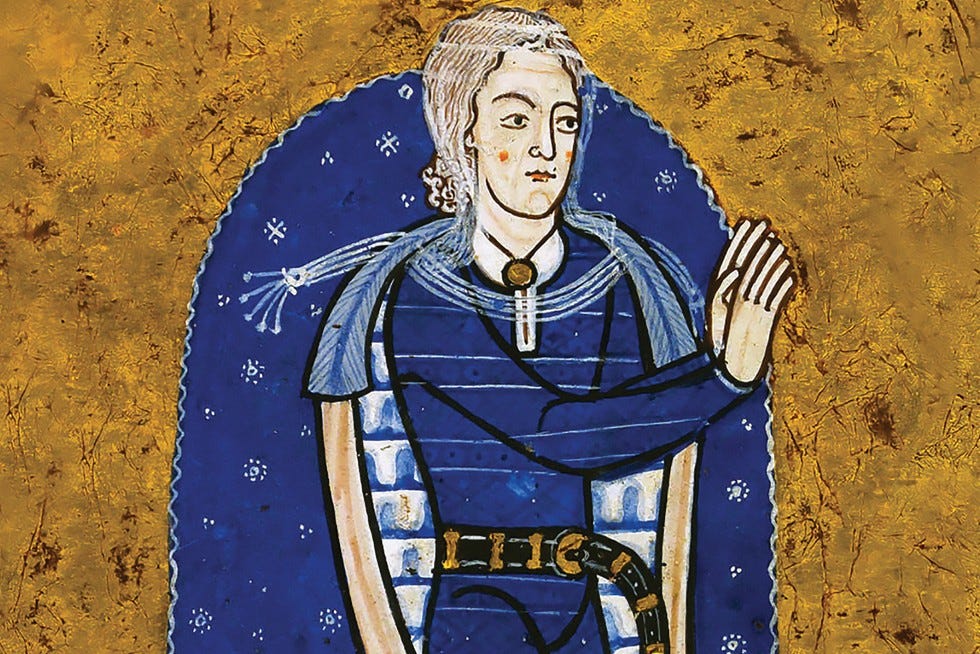
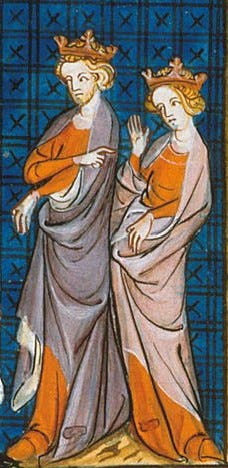
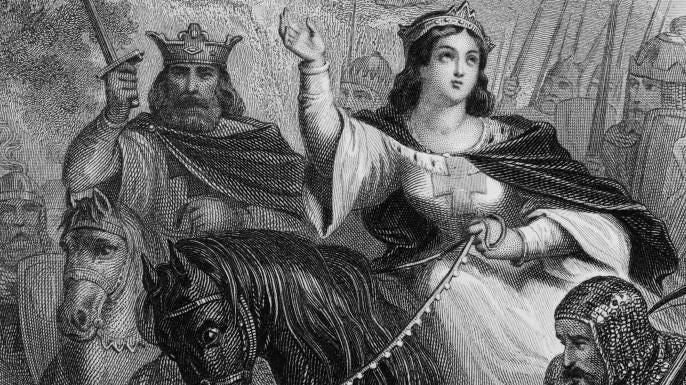

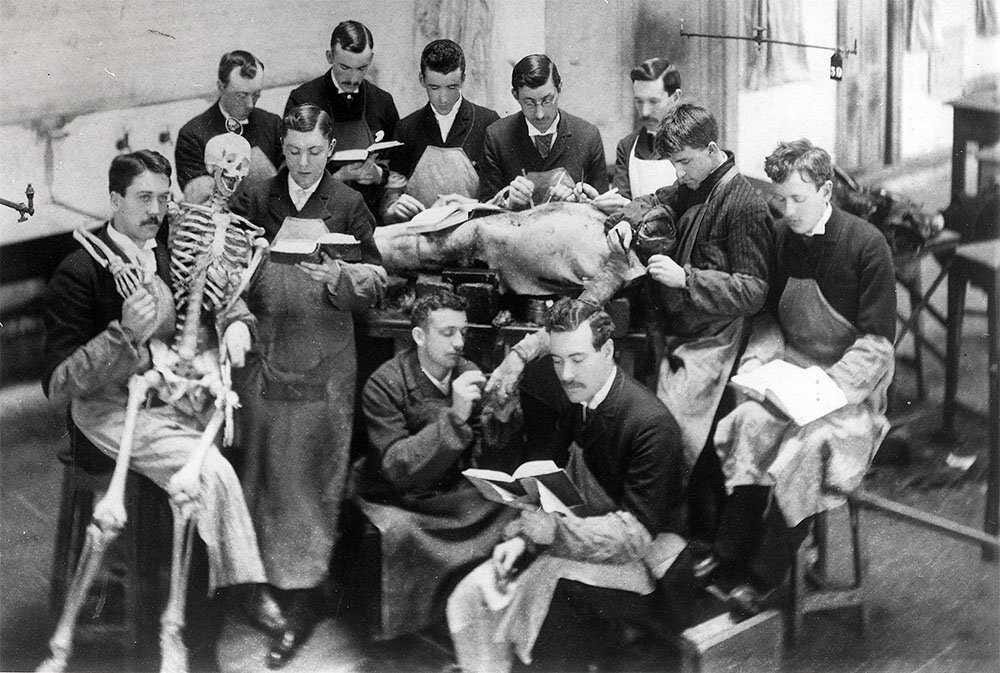
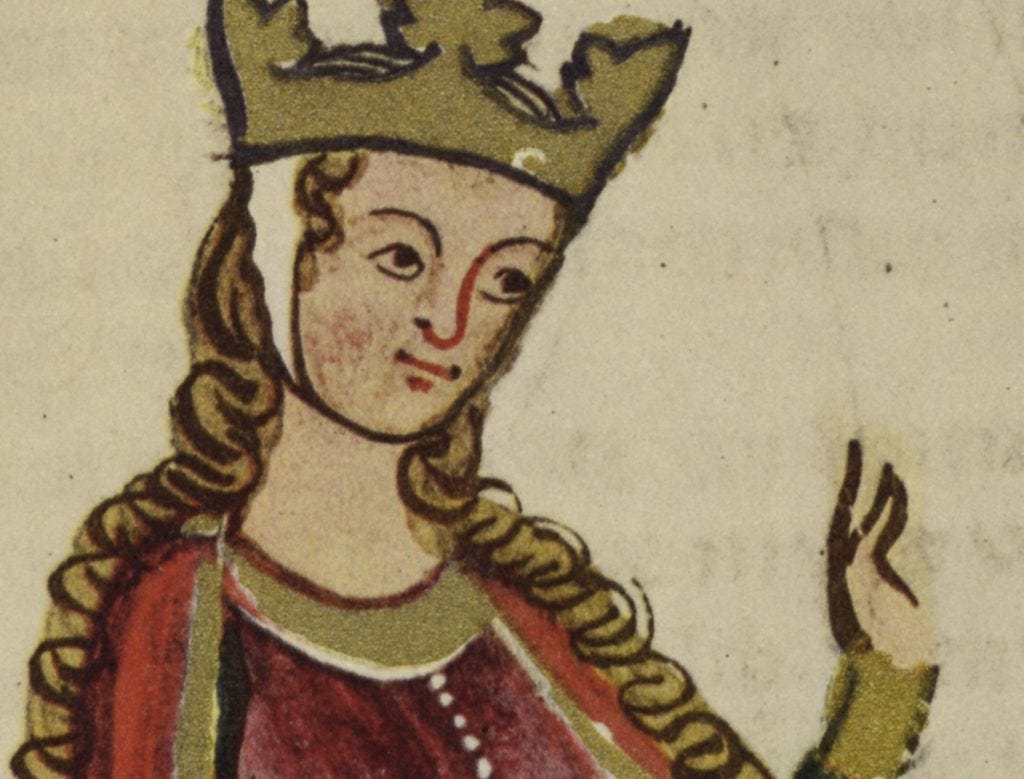




In the early 1970s, as a young teen, I discovered feminism, and my mother discovered Eleanor of Aquitaine. That combination led me to a career in Women’s history and feminist activism. Now as I sit comfortably in the middle of my crone years I am grateful to my mother and Eleanor for help to guide me through the rough and rocky path the patriarchy has left in its wake.
The alternative is a lot worse.